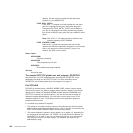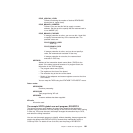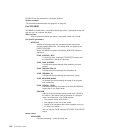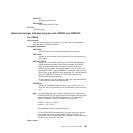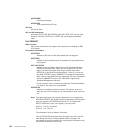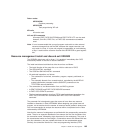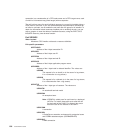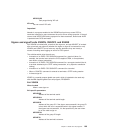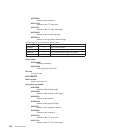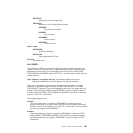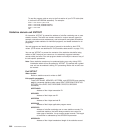Return codes
UERCNORM
Continue processing.
UERCPURG
Task purged during XPI call.
XPI calls
All can be used.
API and SPI commands
All except EXEC CICS SHUTDOWN and EXEC CICS XCTL can be used.
However, CALLDLI, EXEC DLI, or EXEC SQL commands must not be
used.
Note: It is not recommended that your exit program make calls to other external
resource managers that use the RMI, because this causes recursion, and
may result in a loop. It is your exit program's responsibility to avoid entering
a loop. It could use the recursion counter field UEPRECUR to guard against
this.
Resource management install and discard exit XRSINDI
The XRSINDI global user exit is driven, if it is enabled, immediately after CICS
successfully installs or discards a resource definition.
The install and discard activities that drive the exit are as follows:
v The install function of the group list on an initial or cold start of CICS
v The CEDA INSTALL command
v The CICSPlex SM BAS INSTALL command
v All autoinstall operations, as follows:
– The autoinstall of a terminal, connection, program, mapset, partitionset, or
journal
– The automatic discard of an unused terminal, controlled by the AILDELAY
system initialization parameter and the SIGNOFF parameter on the
TYPETERM resource definition.
v The connection to, and disconnection from, an MVS log stream
v A CEMT DISCARD and EXEC CICS DISCARD command
v A EXEC CICS CREATE command
v The front-end programming interface (FEPI) install and discard operations: the
EXEC CICS FEPI INSTALL command and EXEC CICS FEPI DISCARD
command.
The parameter list is designed to pass the names of more than one resource
installed or discarded, in field UEPIDNAM. When designing your global user exit
program, do not assume that the number of resource names passed is always one.
You are recommended to analyze the resources within a loop based on the value
referenced by UEPIDNUM.
Note that the names of modegroups are prefixed with the corresponding connection
name. There is no separator between the two names: the first four characters form
the connection name, followed by eight characters for the modegroup. The parts of
the concatenated name are fixed length—if connection names are defined with less
than four characters, they are padded with blanks in the concatenated names.
Similarly, the connection names for a front-end programming interface (FEPI)
Chapter 1. Global user exit programs 195




